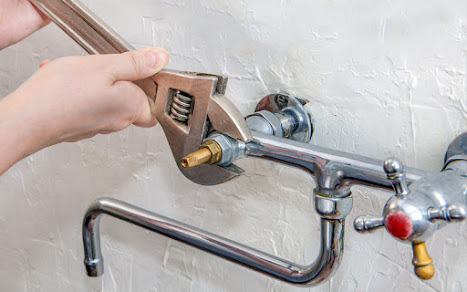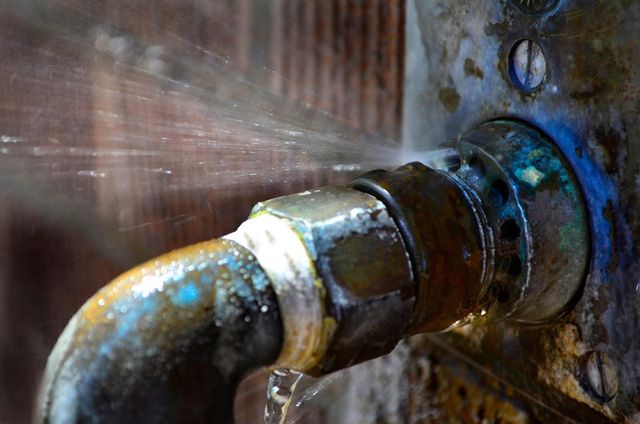Why is My Home Making Weird Plumbing Noises?
Why is My Home Making Weird Plumbing Noises?
Blog Article
What are your insights and beliefs about Why is My Home Making Strange Plumbing Noises?

To identify loud plumbing, it is very important to identify first whether the unwanted audios take place on the system's inlet side-in other words, when water is turned on-or on the drainpipe side. Sounds on the inlet side have differed causes: excessive water stress, used valve and tap components, incorrectly connected pumps or other devices, improperly positioned pipe fasteners, and also plumbing runs having a lot of tight bends or various other limitations. Noises on the drain side generally come from bad location or, similar to some inlet side noise, a layout having limited bends.
Hissing
Hissing noise that takes place when a tap is opened slightly usually signals extreme water stress. Consult your regional water company if you presume this problem; it will certainly have the ability to tell you the water stress in your area and also can set up a pressurereducing valve on the inbound water system pipeline if needed.
Thudding
Thudding noise, commonly accompanied by shuddering pipelines, when a faucet or device valve is shut off is a condition called water hammer. The sound and also vibration are brought on by the reverberating wave of stress in the water, which unexpectedly has no place to go. Often opening a shutoff that discharges water swiftly into a section of piping consisting of a restriction, arm joint, or tee installation can create the very same condition.
Water hammer can generally be cured by mounting fittings called air chambers or shock absorbers in the plumbing to which the issue shutoffs or taps are linked. These tools allow the shock wave produced by the halted flow of water to dissipate in the air they have, which (unlike water) is compressible.
Older plumbing systems may have brief upright sections of capped pipeline behind walls on tap runs for the exact same objective; these can eventually full of water, lowering or ruining their performance. The cure is to drain the water supply totally by shutting down the main water system shutoff and opening all taps. After that open the main supply shutoff and also shut the taps individually, beginning with the faucet nearest the valve as well as finishing with the one farthest away.
Babbling or Screeching
Intense chattering or shrieking that takes place when a valve or tap is turned on, and that normally goes away when the installation is opened fully, signals loose or faulty inner components. The solution is to replace the valve or faucet with a new one.
Pumps as well as appliances such as cleaning machines and dishwashing machines can move electric motor sound to pipelines if they are poorly attached. Connect such things to plumbing with plastic or rubber hoses-never rigid pipe-to isolate them.
Other Inlet Side Noises
Creaking, squeaking, scratching, snapping, as well as tapping normally are triggered by the development or tightening of pipelines, generally copper ones supplying hot water. The sounds occur as the pipes slide against loose fasteners or strike nearby house framework. You can usually determine the area of the trouble if the pipelines are subjected; simply comply with the noise when the pipes are making noise. Most likely you will uncover a loosened pipeline wall mount or a location where pipes lie so close to floor joists or other mounting items that they clatter versus them. Connecting foam pipe insulation around the pipes at the point of contact should treat the trouble. Make certain bands as well as hangers are secure and give sufficient support. Where possible, pipeline bolts must be connected to huge structural components such as structure walls instead of to framing; doing so minimizes the transmission of vibrations from plumbing to surfaces that can amplify and also move them. If attaching fasteners to framework is inevitable, wrap pipelines with insulation or various other durable product where they call fasteners, and sandwich completions of new fasteners in between rubber washers when installing them.
Dealing with plumbing runs that struggle with flow-restricting tight or various bends is a last hope that ought to be taken on just after speaking with an experienced plumbing service provider. Regrettably, this situation is rather typical in older houses that might not have actually been built with interior plumbing or that have seen numerous remodels, particularly by amateurs.
Drain Noise
On the drainpipe side of plumbing, the chief objectives are to eliminate surface areas that can be struck by falling or rushing water and also to protect pipelines to include inescapable noises.
In brand-new building, bathtubs, shower stalls, bathrooms, and wallmounted sinks as well as basins must be set on or against durable underlayments to reduce the transmission of noise through them. Water-saving bathrooms and faucets are much less noisy than standard models; install them as opposed to older types even if codes in your location still permit making use of older fixtures.
Drains that do not run vertically to the basement or that branch right into horizontal pipeline runs sustained at floor joists or other mounting present particularly bothersome sound problems. Such pipelines are huge enough to emit considerable vibration; they likewise lug significant quantities of water, which makes the circumstance even worse. In new building, define cast-iron soil pipes (the big pipelines that drain bathrooms) if you can manage them. Their enormity contains much of the sound made by water passing through them. Additionally, avoid directing drains in wall surfaces shown bedrooms and spaces where individuals gather. Walls containing drains need to be soundproofed as was described previously, making use of double panels of sound-insulating fiberboard and wallboard. Pipes themselves can be covered with unique fiberglass insulation created the purpose; such pipes have an invulnerable plastic skin (sometimes including lead). Results are not constantly sufficient.
WHY IS MY PLUMBING MAKING SO MUCH NOISE?
This noise indeed sounds like someone is banging a hammer against your pipes! It happens when a faucet is opened, allowed to run for a bit, then quickly shut — causing the rushing water to slam against the shut-off valve.
To remedy this, you’ll need to check and refill your air chamber. Air chambers are filled with — you guessed it — air and help absorb the shock of moving water (that comes to a sudden stop). Over time, these chambers can fill with water, making them less effective.
You’ll want to turn off your home’s water supply, then open ALL faucets (from the bathroom sink to outdoor hose bib) to drain your pipes. Then, turn the water back on and hopefully the noise stops! If you’re still hearing the sound, give us a call to examine further.
Whistles
Whistling sounds can be frustrating, as sometimes the source isn’t easily identified. However, if you can pinpoint which faucet or valve that may be the cause, you’ll likely encounter a worn gasket or washer — an easy fix if you replace the worn parts!Whistling sounds from elsewhere can mean a number of things — from high water pressure to mineral deposits. Your best plan of attack here is to give our plumbing experts a call. We’ll be able to determine where the noise is coming from and what the cause may be, then recommend an effective fix!
Cracks or Ticks
Cracking or ticking typically comes from hot water going through cold, copper pipes. This causes the copper to expand resulting in a cracking or ticking sound. Once the pipes stop expanding, the noise should stop as well.
Pro tip: you may want to lower the temperature of your water heater to see if that helps lessen the sound, or wrapping the pipe in insulation can also help muffle the noise.
Bangs
Bangs typically come from water pressure that’s too high. To test for high water pressure, get a pressure gauge and attach it to your faucet. Water pressure should be no higher than 80 psi (pounds per square inch) and also no lower than 40 psi. If you find a number greater than 80 psi, then you’ve found your problem!
Next step is to give us a call in order to install a pressure regulator. Trust us, you don’t want to wait to resolve this issue. Not only is the sound annoying, but high water pressure can be destructive to your home — including damaging certain appliances, like your washer and dishwasher.
Dripping
You might be accustom to the slow quiet drip your kitchen faucet makes. You might have even tuned out your bathroom sink dripping and drabbing all day long — but it’s time to find its cause.
A slow drip could signify a variety of easy to fix issues, such as a worn out O ring, or loose part. And by ignoring the drip, you could be wasting up to 2,000 gallons of water a year! So start conserving water — get it looked at ASAP.
https://www.pwessig.com/blog/2018/december/why-is-my-plumbing-making-so-much-noise-/

As a fervent reader on Why Do My Pipes Make Noises, I was thinking sharing that piece of content was really useful. Liked our blog entry? Please share it. Let someone else discover it. I love reading our article about Why Do My Plumbing Pipes Make A Knocking Noise.
Request Appointment Report this page